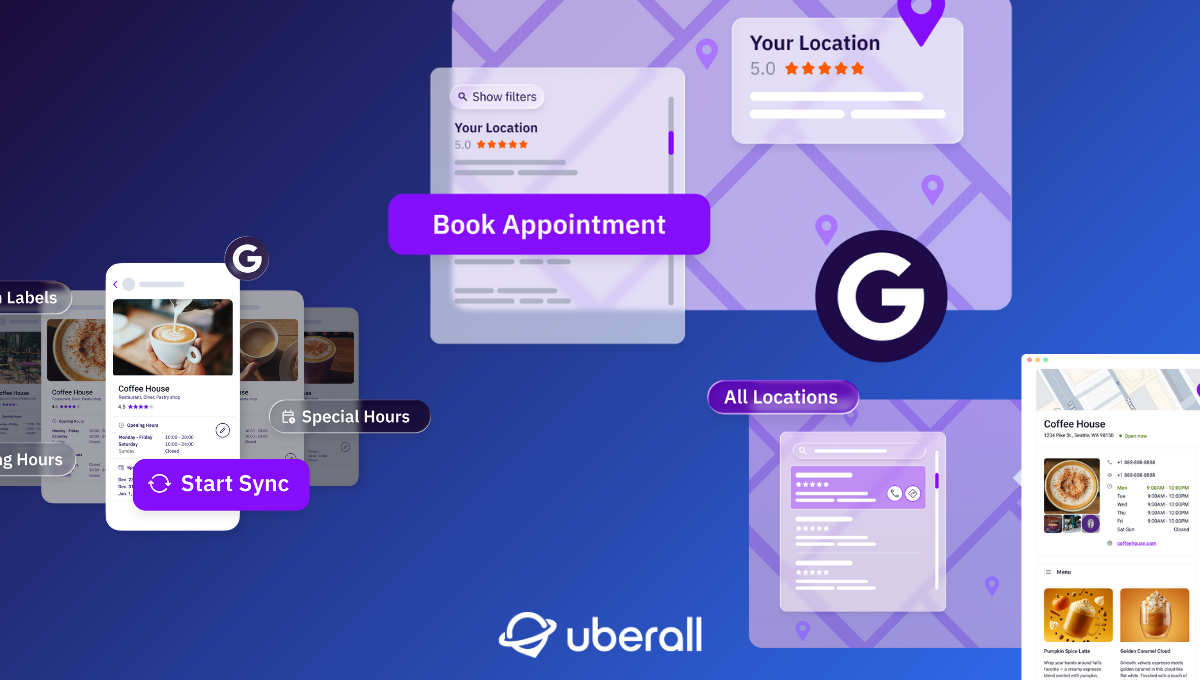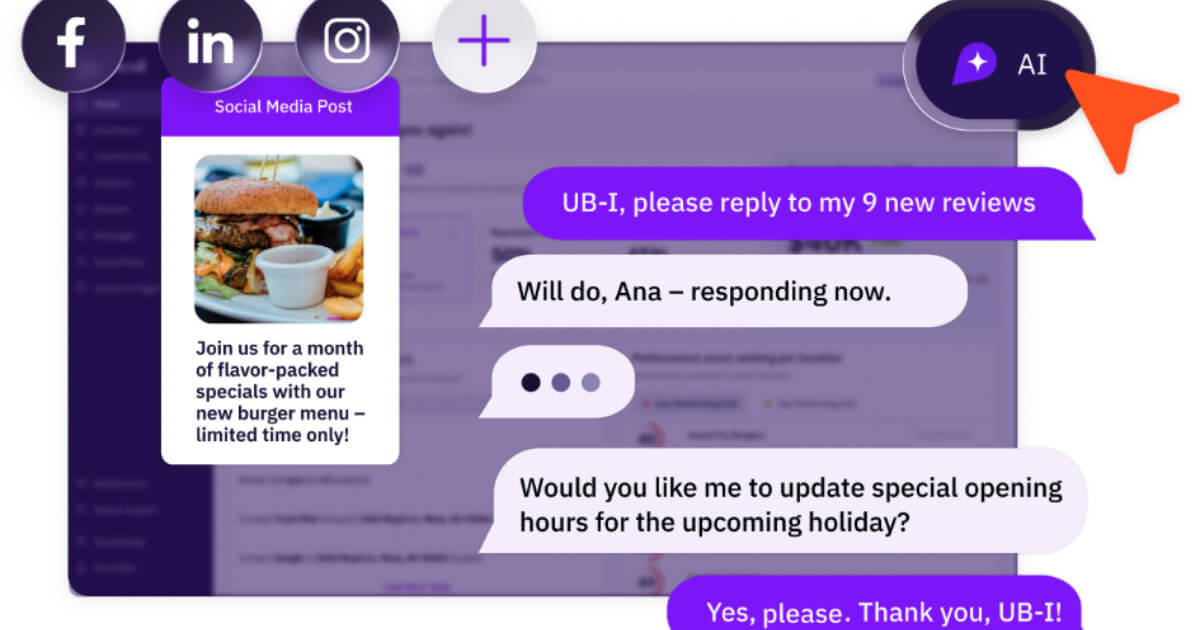
5 Proven Ways to Boost Local SEO
Optimizing your business profile & website for local search means maximum online visibility. Here’s how to boost local SEO for better engagement & sales.
Location marketing is always evolving, thanks to ever-changing search and social algorithms. While these keep both marketers and business owners on their toes (often reluctantly), it’s important to remember that, while SEO can be a long game, it’s far from a losing one.
Multi-location or franchise businesses need to nail their local SEO strategy to win visibility and engagement from their customers. But the most successful will do this not only by keeping on top of these trends but also by getting the basic local SEO best practices right.
At a time when trust and brand awareness will more likely move the needle for businesses than targeting high-volume keywords — especially, by breaking into the Google 3 Pack — these following local SEO tips are nonnegotiable.
Local SEO Tips to Make You More Visible
Straight out the gate: It’s difficult for a franchise business to create a top-down SEO program at scale. That’s because every location has different needs, and no two locations are the same. A holistic and proven local SEO strategy is, however, the best way to start.
Each of our tips will boost local SEO efforts in different ways, and some are more relevant for certain types of businesses than others. Since there’s no-size-fits-all solution, you should aim for improvements in each of these five areas to optimize your online visibility and, of course, win more customers.
1. Accurate and Consistent Business Listings
Local business listings help businesses rank well in search engine results and catch the eyes of their potential customers.
It’s important (nonnegotiable, really) that you make it as easy as possible for web users to access fundamental information about your businesses. Ensure you claim listings across numerous directories and consistently enter accurate store names, addresses, and phone numbers for all of your locations. We call this critical information NAP data (name, address, and phone number).
While Google is powerful, it’s far from the only directory customers use. Aim to claim listings across as many relevant directories as possible to dominate local SEO rankings. These directories include:
- Apple Business Connect
- Bing Places for Business
- Yelp
- YellowPages
- Industry-specific sites like WebMD and TripAdvisor
Never downplay the importance of these listings if you want to dominate local SEO for maximum visibility and customer engagement.
As you can imagine, accurate and consistent listings across every platform enhances customer experience and will help you acquire customers. We know that a marketer’s to-do list never ends, which is why you might even opt to deploy data cleansing services to help you with your listings, instead of blocking precious time in your calendar for manual checks.
We then recommend supplementing your listings with compelling descriptions, high-quality photos, and detailed information to increase your conversion potential. It’s worth the effort: A complete Google Business Profile — with categories, attributes, services, reviews, and so on — makes customers 70% more likely to visit your store and 50% more likely to make a purchase.
2. Proactive Customer Review Management
Electronic word-of-mouth marketing will always be powerful.
Customer reviews are an invaluable source of social proof; they offer immediate and independent reassurance for potential customers who are discovering your brand for the first time. But the impact of reviews goes beyond persuasion: Reviews are also a key ranking factor in local SEO.
Search engines interpret reviews as signals of trust, relevance, and activity. The quantity, quality, and recency of reviews all influence how prominently your business appears in local search results — including high-value placements like the Google 3 Pack. That means each review not only builds credibility with customers but also helps boost local SEO efforts.
- Actively ask for reviews from customers to benefit from unbiased feedback while improving your search ranking. Asking for reviews can be tricky, but creativity and consistency pays off. Consider QR codes on tables or a follow-up email asking how you did.
- Aim to respond to all of your reviews. Issuing tailored responses to every review — whether positive or negative — demonstrates commitment to your customers, and search engine algorithms weigh consistent engagement positively. Customers are more likely to trust your business and select you over competitors if they see that you take customer feedback seriously.
- Monitor and manage reviews across numerous platforms — including Google, Yelp, Facebook, TripAdvisor, Trustpilot, and industry-specific directories — to ensure that you engage customers wherever they’re writing (and reading) reviews about your locations. This holistic approach feeds into wider reputation management.
3. Use Meaningful Local Keywords
An effective keyword strategy should cater to your target audience first, and search engines second. You should understand: What do your customers need? How do they search for it? How can you integrate these insights into your content?
Finding impactful keywords for local SEO calls for a specific approach. Try using a seed term relevant to your business, accompanied by an adjective and your target location — like “best coffee in central Glasgow” or “experienced plumber in Portland.”
Keyword research tools provide useful insights into search volumes and keyword difficulty so you can identify the right keywords to attract and convert your target audience more effectively. Popular tools include Ahrefs, Semrush, and Google Keyword Planner. If you have a PPC team, they should also be able to share which keywords and topics convert well; with these insights, you can create high-performing landing pages and content pieces.
Integrate your keywords naturally into your content, such as page titles, meta descriptions, and headers. Focus on incorporating these keywords in a way that doesn’t feel stilted. And, above all else, avoid keyword stuffing because, let’s face it, your customers can see straight through it and will bounce from your website, never to return again.
4. Build Insightful Local Landing Pages
Creating a landing page for each location generates a direct link between your product or service and the local community you’re targeting.
When you initially set up your website, it’s good to note that consolidating all location-based websites under a single national domain tends to perform better for your SEO across the board — mainly because you’re not cannibalizing your own traffic.
By creating a dedicated page for each location, you create a clear, crawlable connection between your services and the specific geographic area you’re targeting — something users (and search engines) appreciate.
Local landing pages help position your business as a credible local authority — your brand is embedded in the community. These pages also help you merge your broader brand story and highly relevant localized content — from in-store events to local offers.
Well-crafted local landing pages also combine accurate NAP data with compelling content; these function effectively as early sales pitches to your potential customers. Taking advantage of relevant local keywords and more personalized CTAs in this content will help you place your location pages at the top of the SERPs – and boost your brand’s visibility online.
When all of this is done well, your localized website content will be powerful at converting local interest into action (and business).
5. Nail Your Technical Implementation
It might not be everyone’s favorite tip, but your local SEO efforts would be limited without the correct technical implementation. Make sure you tick off the technical aspects of SEO. Simply put, this means removing technical barriers so that users can access your content quickly and easily.
- Audit and enhance your website’s user experience. Consumers frequently reach for their smartphones to search for local businesses, so make sure your site is fully optimized for mobile.
- Ensure your website loads quickly across every sort of device to make sure nothing dissuades potential customers from accessing your content. Google’s PageSpeed Insights tool quickly and easily checks your website’s page speed and gives you tips on how to improve it.
- Optimize your Schema markup, also known as structured data. This formats information so that search engines can understand your web content more effectively. These snippets of code make it easier for search engines to assess your content and determine its relevance. You don’t need to be a programming expert, either: Check out Google’s Structured Data Markup Helper for assistance.
Once your technical SEO is built up to reduce friction on your site, you’ll find you can maximize your other SEO efforts.
Embed These Local SEO Tips into Your Strategy
A strong local SEO strategy considers all the factors discussed — but not every factor weighs equally for every business. Your priorities will vary based on your industry, scale, and structure, so take time to identify which areas are most impactful for your goals.
If you’re part of a franchise, collaboration becomes even more critical. Ask yourself:
- At the CMS level: Does every franchise have their own website, or is there only one global site? If everyone has their own website, how do you manage branding, consistency, and best practices?
- At the team level: Does the corporate marketing team handle local content for franchisees, or do local teams manage their own efforts? Is your model collaborative, with both headquarters and local teams sharing marketing responsibilities?
Multi-location SEO strategists also need to connect regularly with marketers handling paid media, content, PR, and so on. A unified strategy ensures local SEO efforts don’t happen in isolation and maximize a brand’s reach and reputation.
Regularly Conduct a Local SEO Audit
Reviewing the current status of your activities across the various SEO ranking factors – from local keywords to listings management – enables you to concentrate your efforts on what moves the needle.
You should always invest time in assembling a clear picture of where you stand. Check the GBP listings for your locations, scrutinize your review management workflow, and reassess your website’s mobile friendliness.
A specialist location marketing tool takes the stress out of local SEO by empowering digital marketers to manage numerous aspects from a single, integrated solution. An effective audit from one of these tools should flag the areas in greatest need of attention.
Many tools now leverage the power of AI and automation to keep your business data accurate and up to date, wherever it appears online. With this taken care of, you’re free to focus on creating compelling copy or developing targeted marketing strategies.
Do the Work to Dominate Local SEO
Local SEO is (unfortunately) not a one-time “task” you can cross off your to-do list — it’s an ongoing process that requires you to adapt to changing algorithms and consumer behaviors.
By staying informed, nailing the basics, collaborating well with the rest of your team, and leveraging the right tools, you can position yourself for sustained growth and success in the competitive digital marketplace.
Deploying an AI-powered platform will help you get your local SEO ducks in a row far more easily and maximize your local SEO impact in the process. And it’s worth it — optimizing your online local visibility through these five local SEO tips can set you up for greater visibility in search results, while driving more engagement with new and existing customers.
Ready to Transform Your Business?
Connect with our partnership team to learn how Uberall can help you achieve similar results. Get a personalized consultation and discover the opportunities waiting for your business.
Resources











